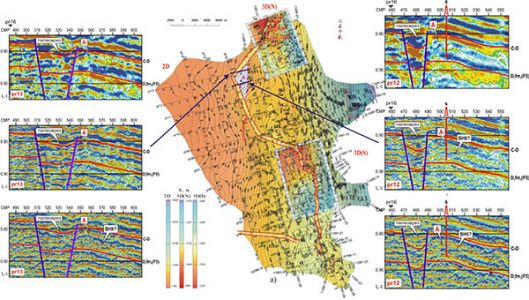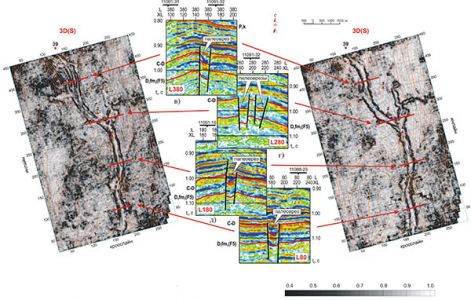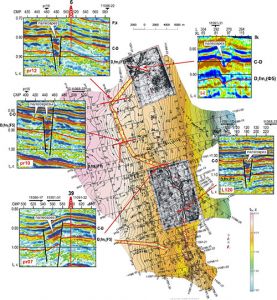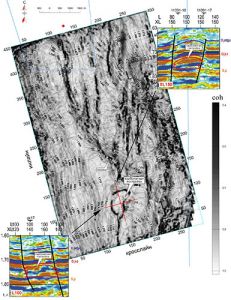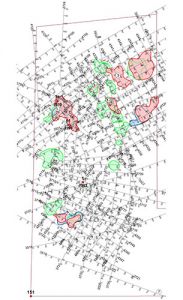The specific feature of the complex interpretation of the data, obtained using the high-resolution seismic technology, HRS Technology, is to find such a combination of geological and geophysical parameters that could be effectively used in specific seismgeological conditions for the study and analysis of complex geological mechanism. This mechanism determines a spatial distribution of the sought productive facilities and the ultimate location of complex oil-promising objects (oil and gas traps), oil and gas accumulation zones, local inhomogeneities, characterized by a certain set of composition and properties, etc.
The results that are obtained from the studies using high-resolution seismic technology, HRS Technology, characterize the distribution in the studied section of lithology and reservoir properties of the rocks. Under favorable seismogeological conditions, it is possible to determine the nature and degree of fluid saturation in reservoir rocks.
The process of extracting necessary information from the seismic data about the geological parameters acts in general as a process of complex geological interpretation of geophysical data and justification for the geological structure of the investigated oil-perspective object. This process involves both the analysis of various geological and geophysical data and the number of automated procedures performed in a certain sequence.
The objective of the integrated interpretation is not an assessment of a single feature of oil and gas potential (presence of structures or direct deposit), but an analysis of all information about the medium; in other words, the construction of a set of interpretive models of the medium that are reflecting all the features of the geological structure and geological history, which collectively define oil and gas.
At the same time, it should be noted that a feature of seismostratigraphic approach for the anticlinal oil and gas exploration is the transfer of the traditional geological methods into the seismic base (using the interference pattern of a seismic recording as the base model for the analysis).
In contrast, the feature of using a high-resolution seismic method in search of oil deposits of various genesis and sizes is the opposite – the transfer of non-traditional seismic methods into the geological framework (for the essential information about the extraction results from the dynamics of a seismic record using authentication information about the geological indicators with the help of the high-resolution seismic technology, HRS Technology, the well-logging data, and drilling).
The use of an integrated in-depth data interpretation of high-resolution seismic survey, the well-logging, and the results of facies analysis of high resolution data reveals a number of new promising areas in the reservoir, significantly refining the contours of the oil-bearing. The main types of traps in the reservoir often turn out to be the traps of lithological and tectonic shielded type.

